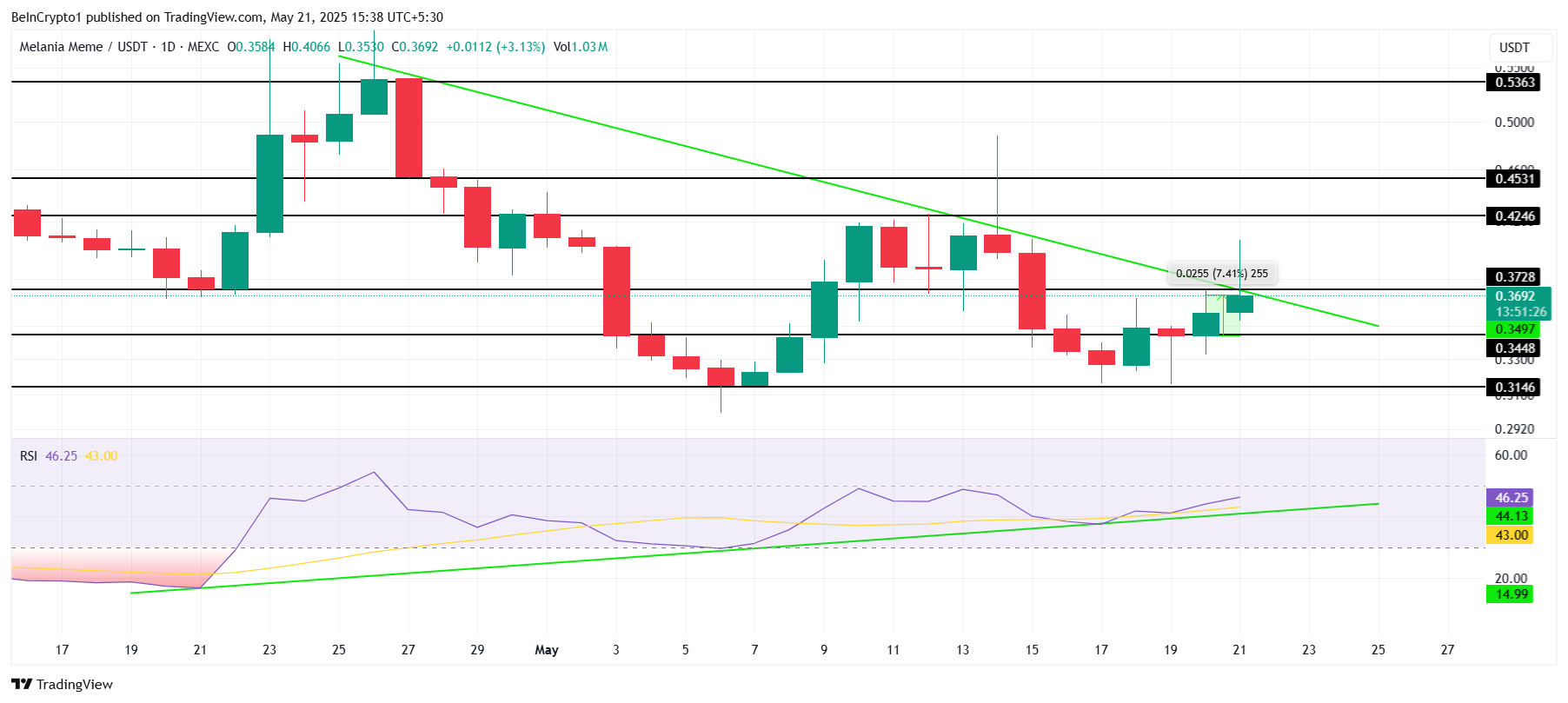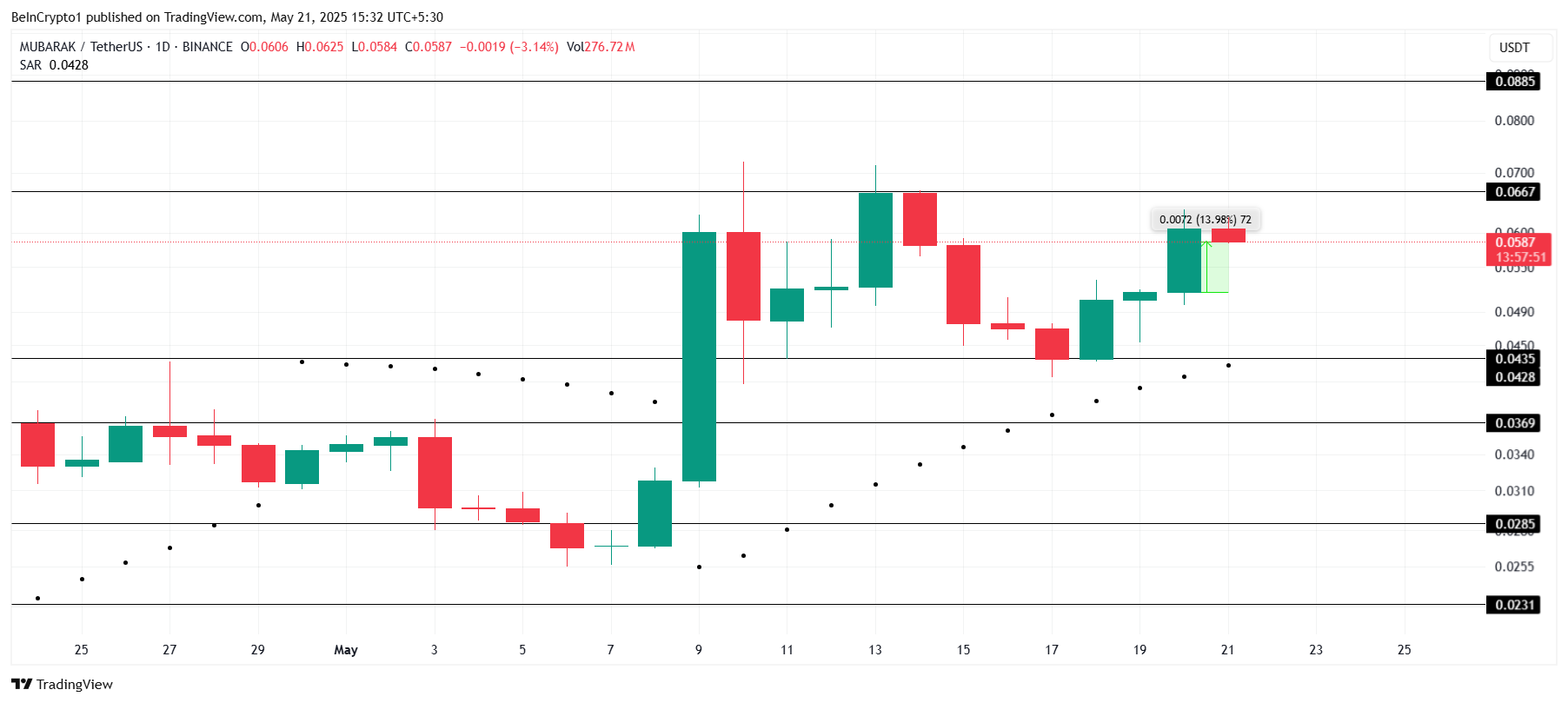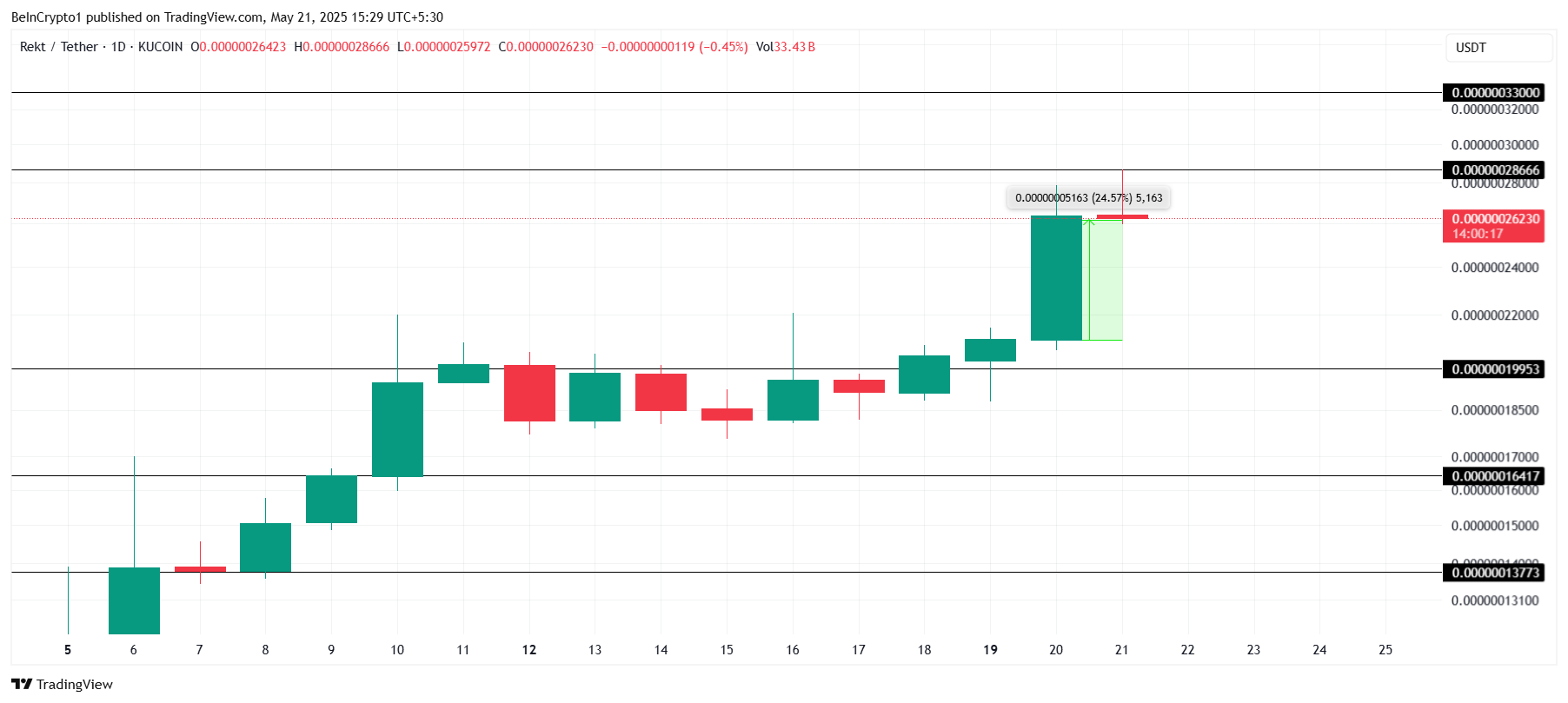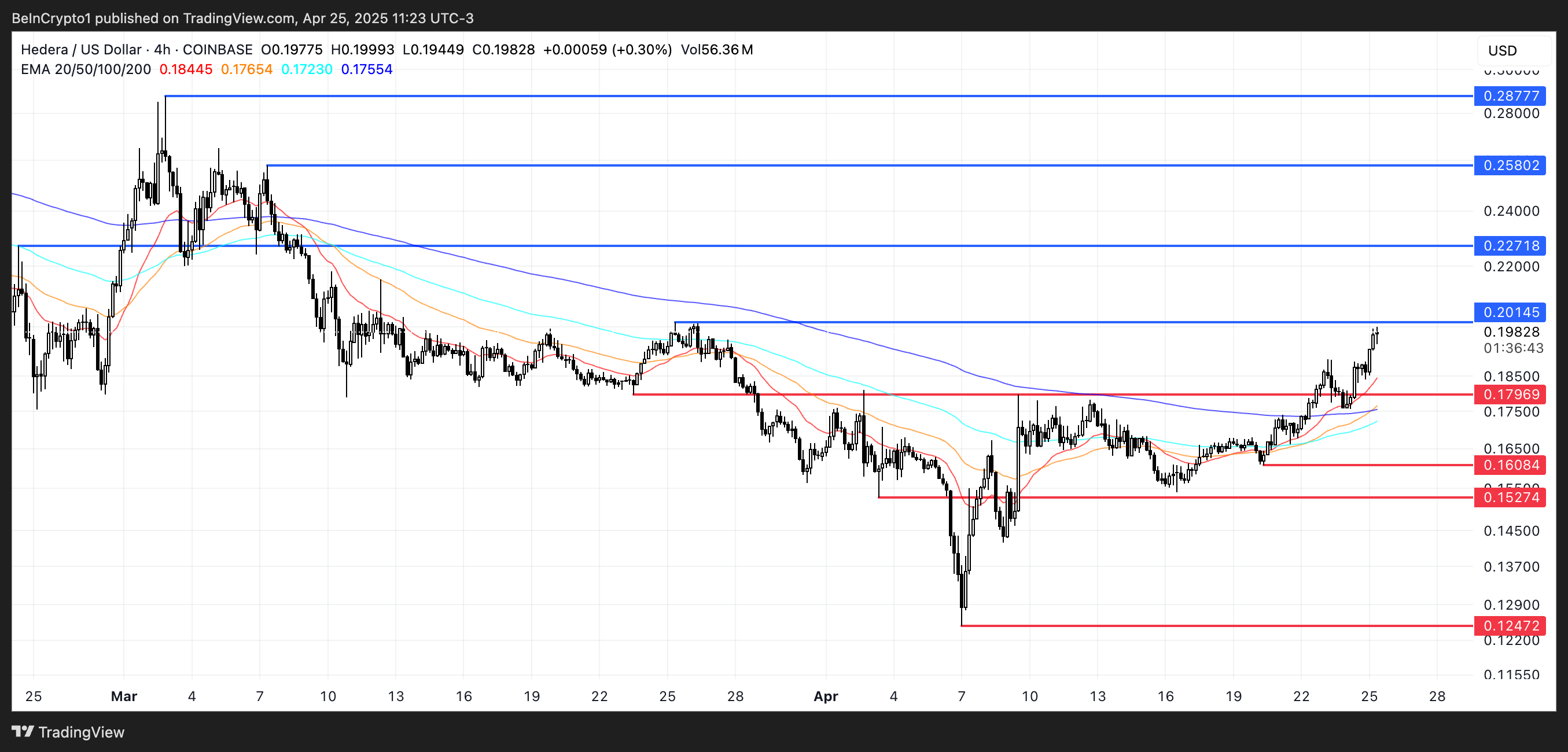March proved to be a challenging month for many altcoins, with several experiencing sharp corrections. However, as Q2 2025 approaches, some tokens are positioned to benefit from potential improvements in market conditions.
BeInCrypto has analyzed four altcoins that, while not on the verge, are closer than others to reaching new all-time highs.
Gate (GT)
GT is currently trading at $23.50, just 10% away from its all-time high of $25.96. To reach this level, the altcoin needs to breach and flip $23.94 into a support level. A successful break above this resistance could pave the way for further price gains.
Market conditions suggest that GT could experience a price increase in the coming days, provided investors refrain from selling at the sight of profits. If this occurs, GT could push past $25.96 and potentially form a new ATH.
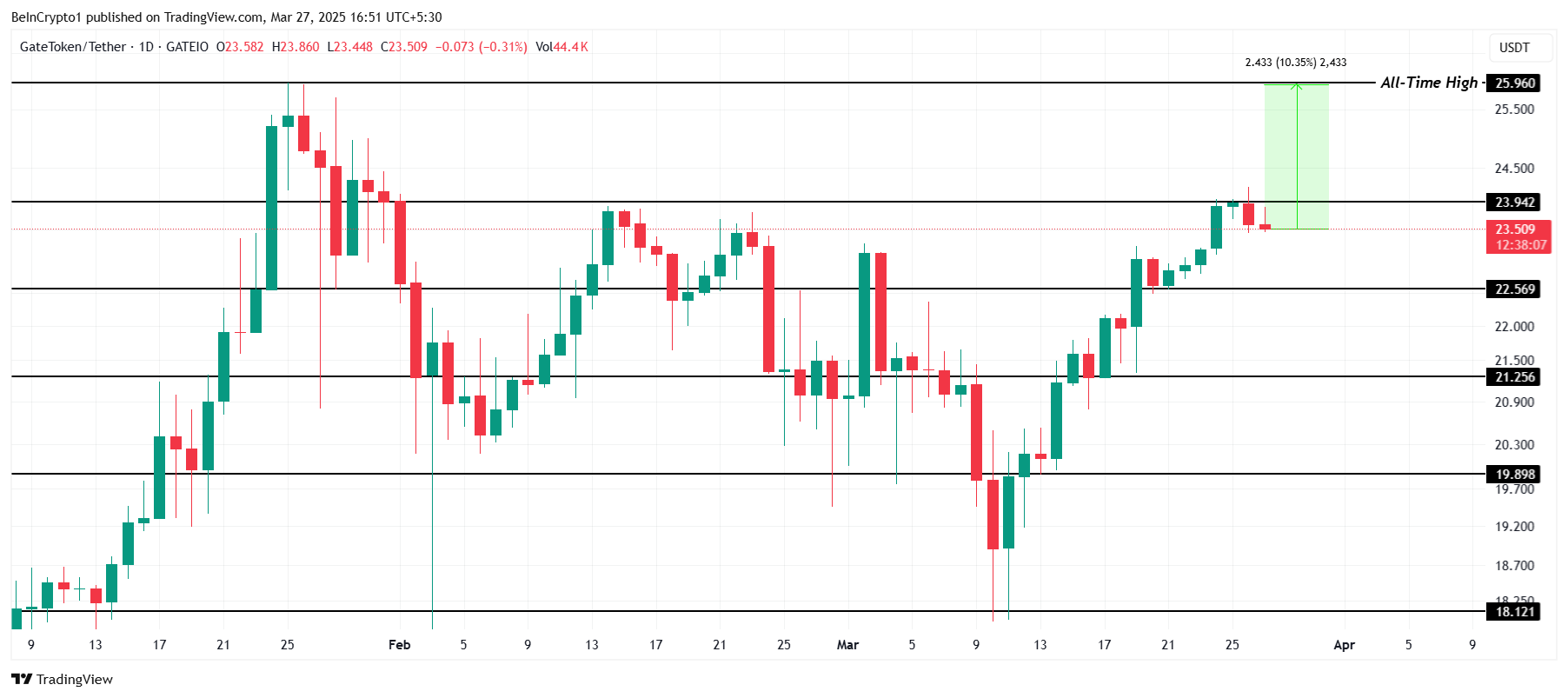
However, $23.94 has acted as a strong resistance for the past two months. If GT fails to breach this level, it could fall back to $22.56 or even lower to $21.25. Such a drop would invalidate the bullish outlook and potentially extend the current downtrend.
BNB
BNB has made several attempts to reach its all-time high of $793 since December 2024 but has consistently failed to break the $741 resistance. Despite sharp declines, the altcoin has shown resilience, bouncing back each time, indicating some level of investor confidence and market interest in its future performance.
Currently, BNB is holding above the critical support block between $587 and $619, standing about 25% away from its ATH. If broader market conditions turn bullish, BNB could be poised to attempt a new ATH within the next month.
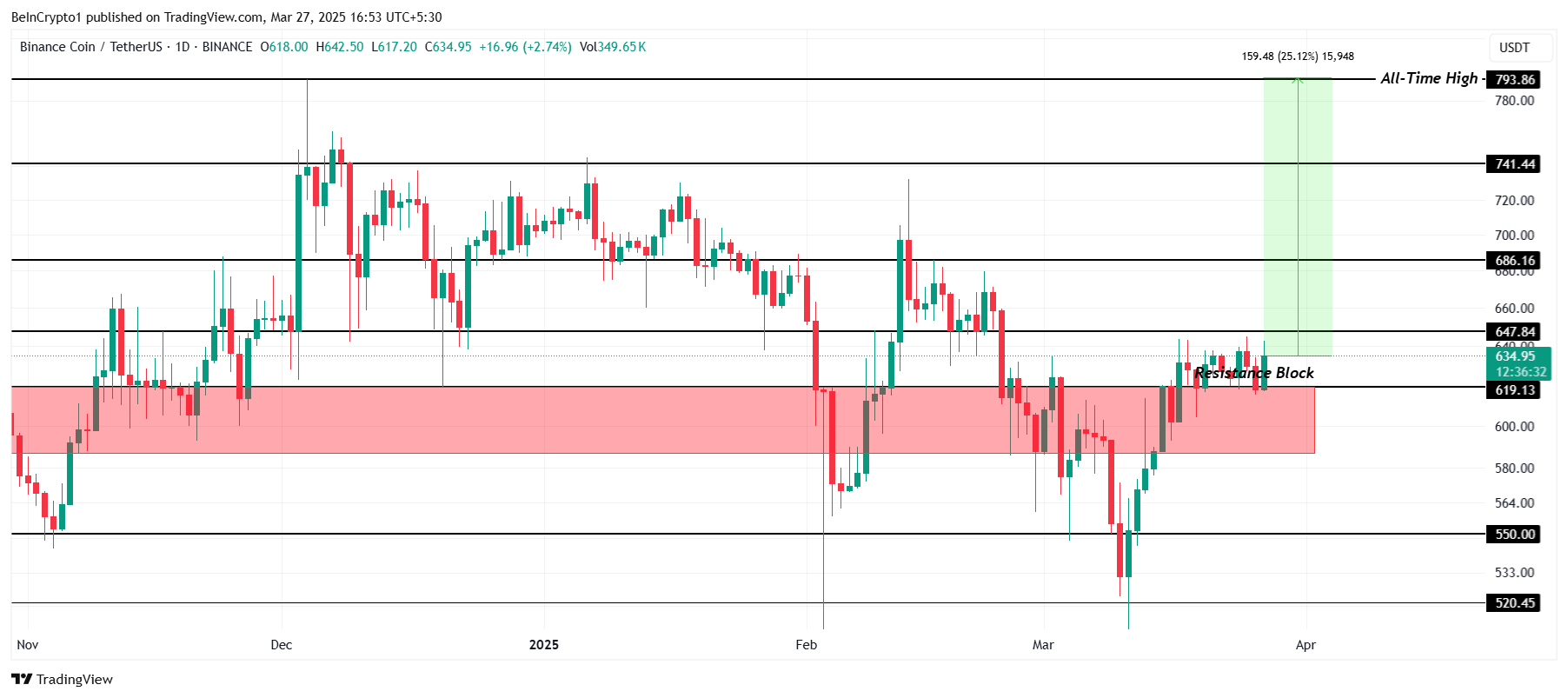
While BNB may face challenges at the $741 resistance level, strong support could push it through this barrier. However, if BNB fails to break $647 first, it could see a decline below the $619 support level. This would invalidate the bullish outlook and potentially extend the current downward trend.
MANTRA (OM)
OM’s price is currently trading at $6.58, still far from its all-time high of $9.17, requiring a 40% rise to reach that level. Despite this, the altcoin has significant potential to rally. A positive shift in market sentiment could drive it toward higher price levels.
Strong bullish momentum has fueled OM’s rise, with the altcoin reaching an ATH of $9.17 towards the end of February. The continued inflow into OM signals the possibility of another rally. If OM successfully breaches $7.02 and flips $7.74 into support, it would solidify the bullish outlook.
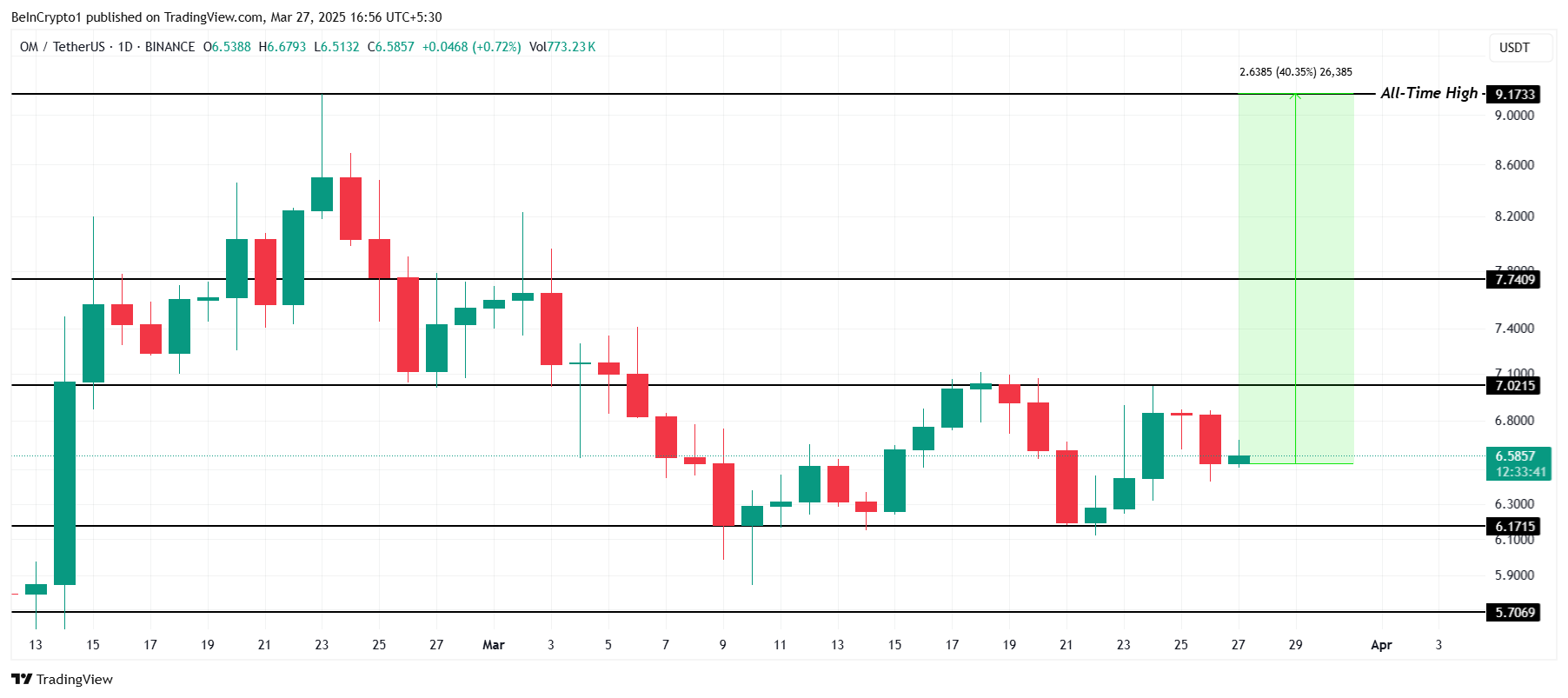
However, if OM fails to breach the $7.02 resistance, the altcoin could fall back to $6.17. This drop would likely continue its consolidation phase, as seen earlier this month, and invalidate the bullish thesis. A failure to break key resistance levels would limit price growth.
Cheems (CHEEMS)
CHEEMS, though a lesser-known coin, has been gaining bullish momentum this month. Earlier this week, the altcoin formed a new all-time high at $0.000002179. This recent price surge indicates growing investor interest and the potential for further gains if market conditions remain favorable.
For CHEEMS to form a new ATH beyond $0.000002200, it will need a 25% rally from its current price. The altcoin is likely to bounce off the $0.000001660 support level, which could help capitalize on the current bullish momentum. A sustained move above this level could signal further upside potential.
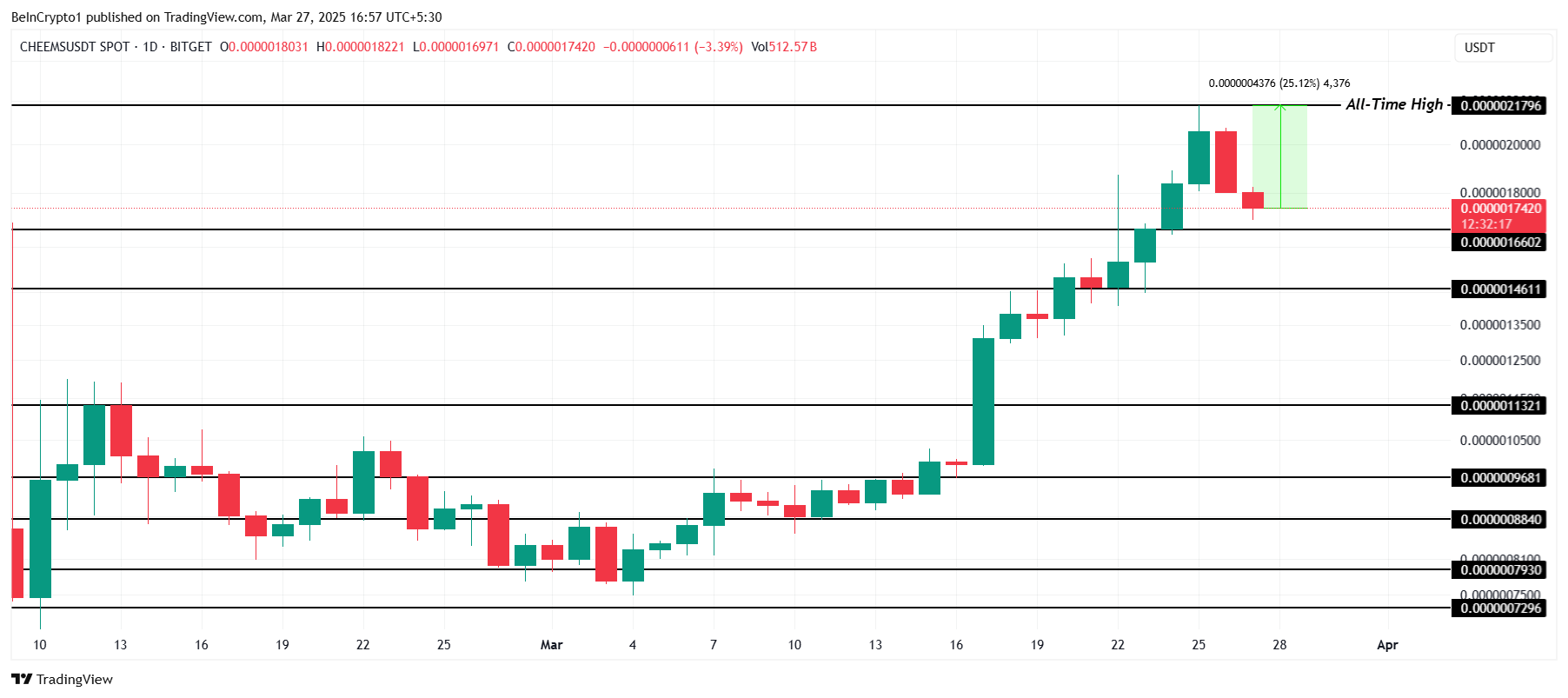
However, if CHEEMS fails to hold above the $0.000001660 support, it could face significant downward pressure. A drop below this level could result in CHEEMS falling to $0.000001461 or even as low as $0.000001132. Such a decline would invalidate the bullish outlook and may extend the downtrend.
The post 4 Altcoins That Could Hit New All-Time Highs in April 2025 appeared first on BeInCrypto.



